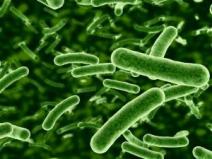Resistance not just caused by antibiotics misuse

The reasons behind the spread of antibiotic resistance are much more complex than primarily antibiotic abuse or misuse. Causes also lie in lack of proper sanitation and hygiene, and even the environment, reports the American Academy of Microbiology.
Microbial evolution
The report, “Antibiotic Resistance: An Ecological Perspective on an Old Problem” is based on a colloquium convened by the Academy in October 2008. It states that resistance development is founded in the inevitability of microbial evolution. There are no scapegoats, and responsibility is partly due to medical practice, including patient demand, industrial practices, politics, and antibiotics themselves.
Multi-factorial
“Antibiotic resistance is an international pandemic that compromises the treatment of all infectious diseases. At the present time, resistance essentially is uncontrollable. The reasons behind the establishment and spread of resistance are complex, mostly multi-factorial, and mostly unknown. The colloquium consensus was that efforts must target both the bacterial transmission and antimicrobial use,” says colloquium co-chair, Jacques F. Acar, M.D. According to the Academy report, more research is needed now, bridging medical, chemical, and environmental disciplines.
Driving factor
Resistance is often portrayed as simply an undesirable consequence of antibiotic abuse or misuse. But the rate of antibiotic resistance emergence is related to all uses of drugs, not just misuse. The total amount of antibiotics used and the environment also play roles. The main driving factor behind resistance may actually be a lack of adequate hygiene and sanitation, which enables rapid proliferation and spread of pathogens.
Strategy
The report states that it is possible to co-exist with resistance by developing new strategies to prevent resistance from spreading and, where it already exists, identify the strains we need to protect against, find new ways to treat resistance infections effectively in patients, and manage reservoirs of antibiotic strains in the environment.
The report summarizes the current scientific understanding of antibiotic resistance, the scope of the problem, and methods at our disposal for detecting emergence and preventing spread.
The knowledge gaps about the prevalence of resistant strains and resistant infections are highlighted as are the unique problems and challenges in developing countries. The continuation of antibiotic use for human and animal diseases is at stake unless worldwide efforts are taken. Research for new antibiotics under new paradigms must consider what the functions of these molecules are in nature, how resistant populations relate to them, and where and how to find them.
Related links:
Full report accessible from the Academy website
American Society for Microbiology













